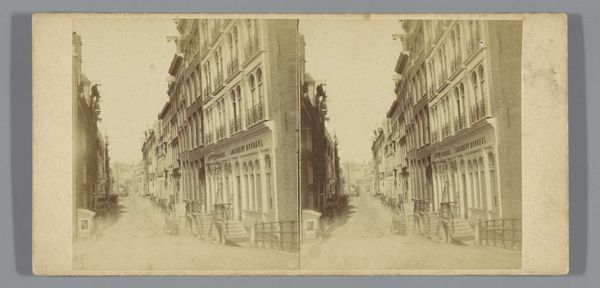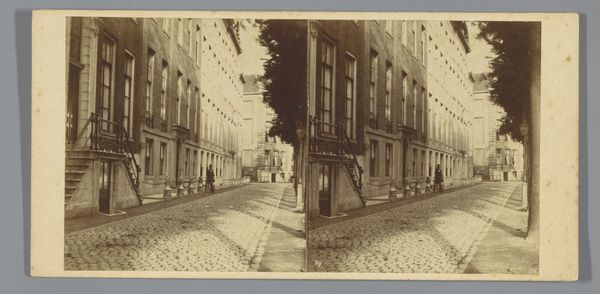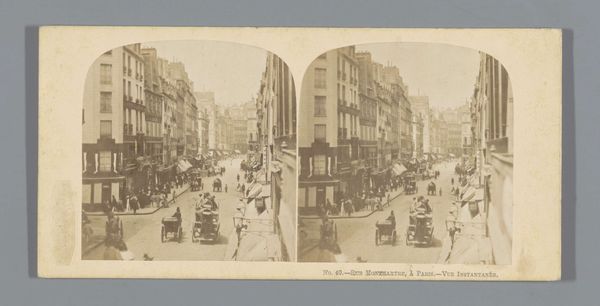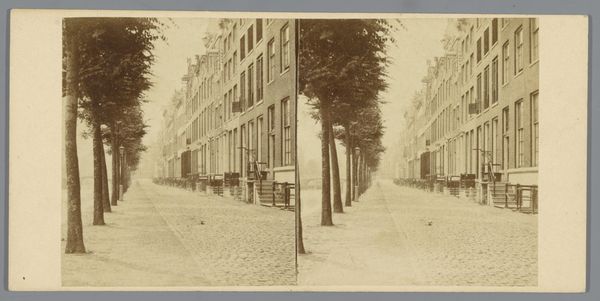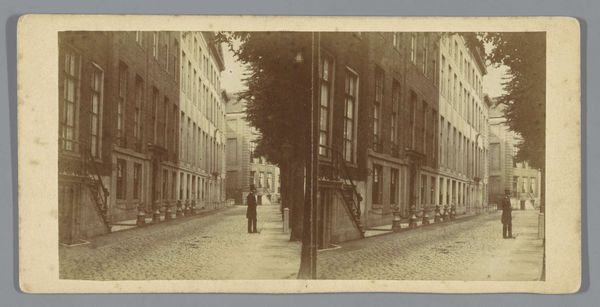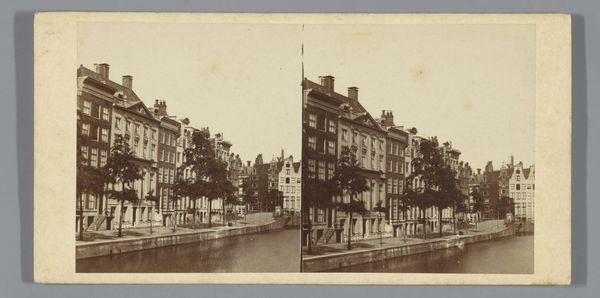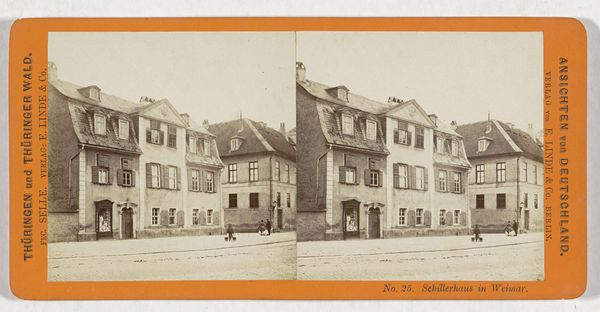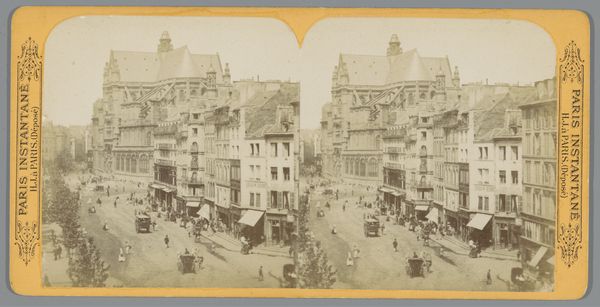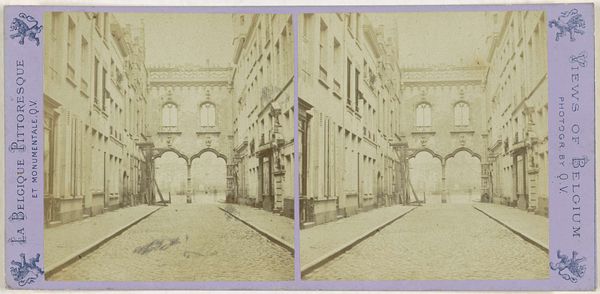
print, photography
# print
#
photography
#
cityscape
#
street
Dimensions: height 86 mm, width 176 mm
Copyright: Rijks Museum: Open Domain
Editor: This is a stereo photograph from sometime between 1869 and 1872, titled "Synagogue in the Börnestrasse, Frankfurt am Main," by Johann Friedrich Stiehm. Looking at it, I'm struck by the receding perspective and the way the grand architecture of the Synagogue looms at the end of the street. What elements stand out to you? Curator: Note how the photograph’s bilateral symmetry, enforced through the dual perspectives of stereo photography, creates a self-contained visual system. This rigid structure emphasizes the converging lines of the street. Did Stiehm intentionally harness perspective as a formal strategy to draw the eye towards the synagogue, which visually terminates this system? Editor: It does seem deliberately composed, though I wonder if some of it is just the limitations of the technology. Was this effect common in early photography? Curator: Observe how the tonal range, although limited by the photographic technology of the era, provides contrast. The lighter facades of the buildings and street in the foreground advance spatially against the darker tonalities of the synagogue at the vanishing point. Light and shadow here serve as structural elements. Editor: So you're suggesting Stiehm isn't just documenting; he's actively shaping how we perceive space and depth? Curator: Precisely. Also, reflect upon the choice of viewpoint, this long street ending with the synagogue as the focal point. Stiehm creates an intriguing dialogue between architectural form and the surrounding urban space. A study of formal organization shows how photographic structure relates and dictates architectural and urban expression. Editor: That makes me consider the power of perspective in photography as a compositional choice and less of just a representational function. Curator: Indeed. By analyzing these visual elements, we gain insight into how photography functions as an aesthetic system.
Comments
No comments
Be the first to comment and join the conversation on the ultimate creative platform.
